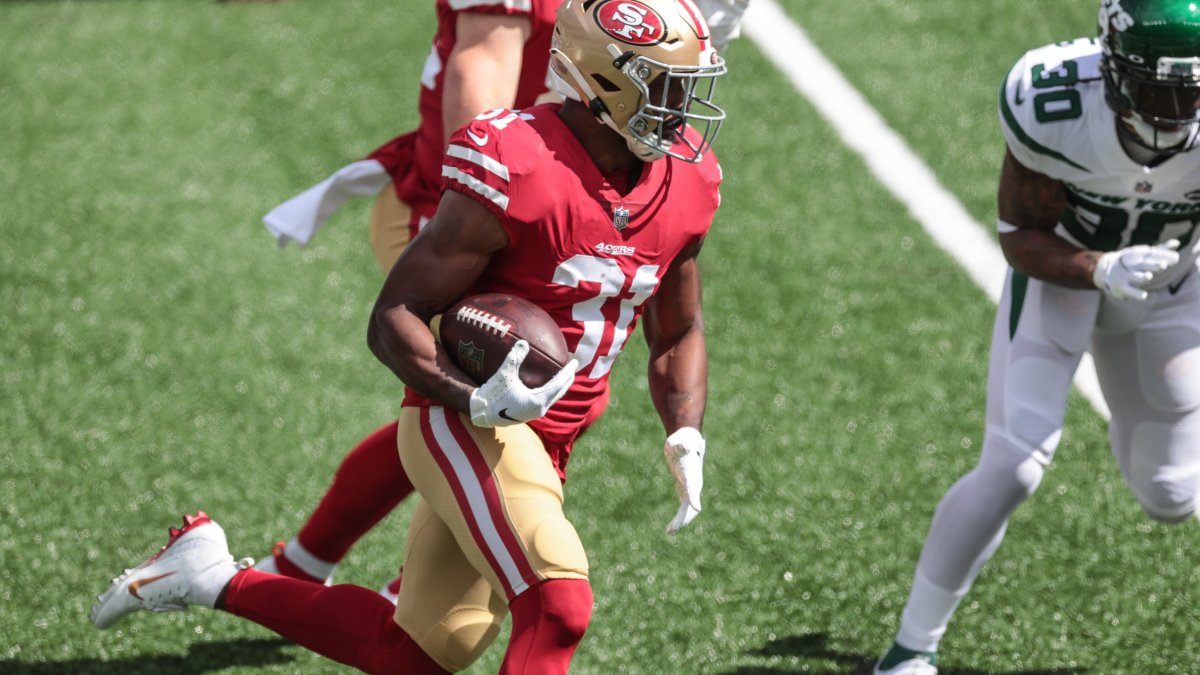We’re in the thick of the NFL offseason and it’s officially time to start fantasy football prep. I’ll be answering the biggest questions heading into the 2021 season. Click here to read the series of questions answered so far.
Most football fans would be hard pressed to name more than a few play-callers better than San Francisco 49ers head coach Kyle Shanahan. Yes, PFF managed to name at least six, but generally the mastermind behind the 2012 Washington Football Team, 2016 Atlanta Falcons and 2019 49ers is considered one of the league’s best at what he does.
Here’s the one secret about Shanny that the government doesn’t want you to know: Those three aforementioned offenses mark the only instances of him finishing inside of the NFL’s top-20 scoring units since 2010. The general lack of competent quarterback play in the other seasons makes it tough to completely blame Shanahan for these failures; just realize it hasn’t been a given that he’ll lead an elite scoring offense over the years.
The bigger constant for Shanahan as a play-caller has been the presence of a dominant rushing attack. Overall, he’s finished with a top-five offense in total rushing scores on four separate occasions since 2012 while only falling outside of the top 13 once. There’s a good chance you’ve been a solid fantasy football asset if you’ve been a starting running back for the Shanahan family over the years. This season’s crop of contenders doesn’t look much different from past producers from a talent perspective; the million dollar question is who will rise to the top of the 49ers’ somewhat muddled depth chart.
What follows is a breakdown on Shanahan’s historical habits when it comes to his backfield splits and which San Francisco running backs to target in fantasy land ahead of 2021.
Shanahan typically uses multiple running backs
There are 13 seasons' worth of data on Shanahan backfields where he was either the offensive coordinator or head coach. The following table lists each year’s respective 1) RB1, 2) fantasy finish, and 3) workload.
| Year | Team | RB1 | Fantasy | Notes |
| 2008 | HOU | Steve Slaton | RB7 | 318 touches in 16 games. Workhorse |
| 2009 | HOU | Slaton | RB29 | 175 touches in 11 games. Reduced, but still featured RB |
| 2010 | WAS | Ryan Torain | RB33 | Portis injury led to Torain generally working as a workhorse |
| 2011 | WAS | Roy Helu | RB24 | 200 touches in 15 games. Lead committee back |
| 2012 | WAS | Alfred Morris | RB7 | 346 touches in 16 games. Workhorse |
| 2013 | WAS | Morris | RB19 | 285 touches in 16 games. Workhorse |
| 2014 | CLE | Isaiah Crowell | RB33 | Split with West and Tate in 3-RB committee |
| 2015 | ATL | Devonta Freeman | RB1 | 338 touches in 15 games. Workhorse |
| 2016 | ATL | Freeman | RB6 | 281 touches while Coleman had 149. Lead committee back |
| 2017 | SF | Carlos Hyde | RB8 | 299 touches in 16 games. Workhorse |
| 2018 | SF | Matt Breida | RB26 | No 49ers RB reached 200 touches or 15 games |
| 2019 | SF | Raheem Mostert | RB26 | Took over down the stretch, but no RB had more than 160 touches |
| 2020 | SF | Jeff Wilson | RB31 | Committee back benefited mightily from Mostert and Coleman injuries |
Injuries have certainly limited Shanny’s chances at giving a single running back a massive workload in recent years. Still, we’ve somewhat consistently seen Shanahan lean on multiple running backs, with the main exceptions being Morris, Freeman and Hyde.
Zeroing in on specifically 2020 adds credence to the idea that we’re going to see multiple backs involved regardless of how inevitable injuries play out. Last season, Mostert never played more than 60% of the offense’s snaps in a single game and it took Wilson until Week 16 to do so for the first time. Somehow Jerick McKinnon led the way with three such games, but he typically wasn’t afforded the sort of enhanced workload that usually goes hand in hand with an increase in snaps.
Shanahan isn’t immune to handing over the backfield to a single back; the problem is that we shouldn’t necessarily expect that to happen next season.
Exclusive content for premium subscribers

WANT TO KEEP READING?
Dominate Fantasy Football & Betting with AI-Powered Data & Tools Trusted By All 32 Teams
Already have a subscription? Log in



 © 2025 PFF - all rights reserved.
© 2025 PFF - all rights reserved.